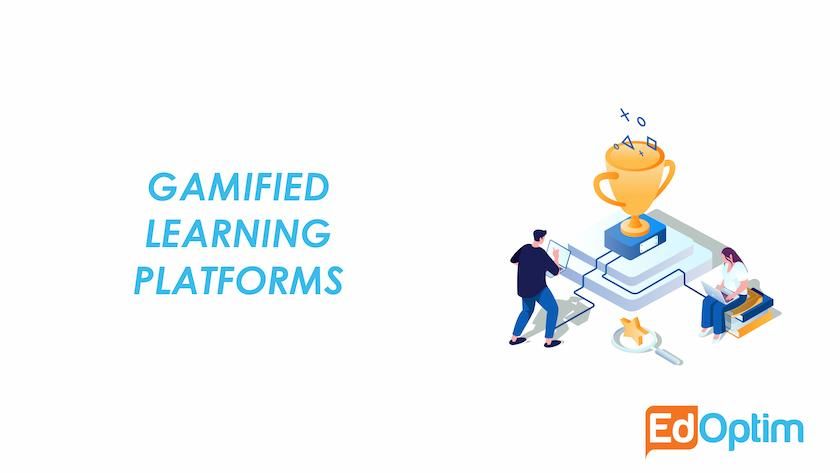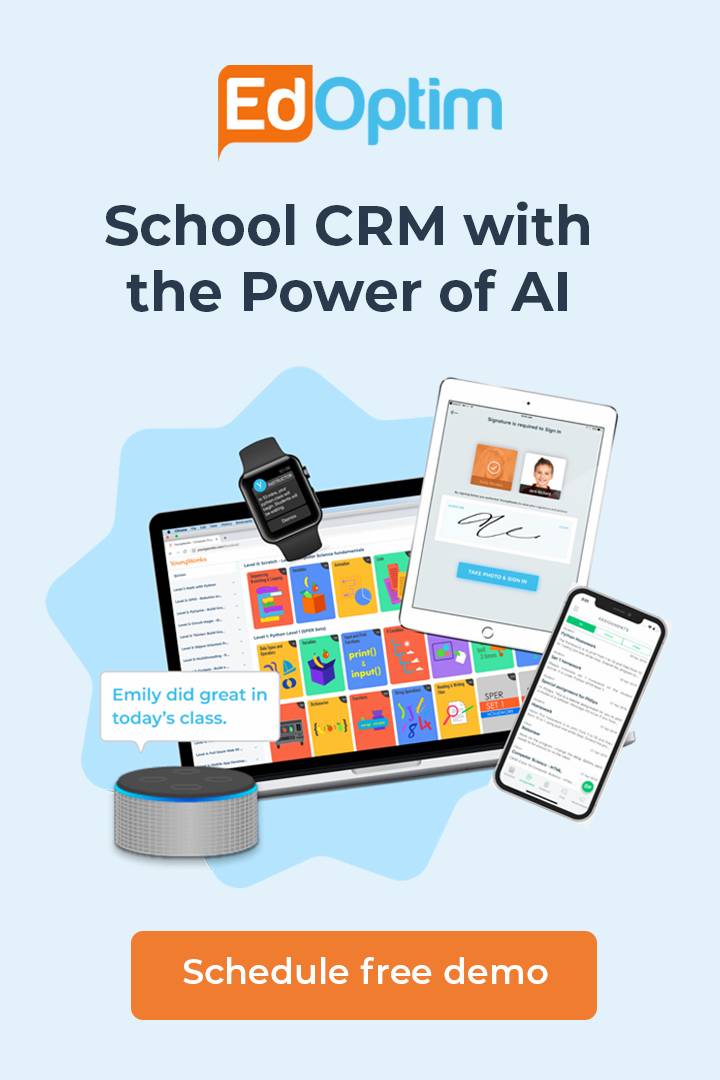Dec 23, 2024 By Team EdOptim *
Let’s delve deeper into the fascinating world of gamified learning to understand its impact and explore how it enhances the educational experience for everyone, from beginners to seasoned professionals.
What Is Gamification in Learning?
At its core, gamification in learning involves integrating game elements such as leaderboards, quests, avatars, and rewards into educational environments. This innovative approach transforms traditional learning experiences, whether in classrooms, online courses, or corporate training sessions, into engaging and interactive journeys.
Gamification creates opportunities for learners to immerse themselves in activities that reward effort and achievement. For instance, platforms like Duolingo allow users to earn points, track their progress, and compete with others in friendly challenges, making language learning fun and addictive. Similarly, Kahoot uses gamified quizzes to energize classroom learning, turning lessons into interactive competitions.
By incorporating progress tracking, realtime feedback, and engaging storylines, gamified learning platforms build an immersive learning environment. This approach ensures that learners feel motivated, engaged, and ready to tackle new challenges.
Why Should I Launch a Gamified Learning Platform?
Developing a gamified learning platform is not just a trendy idea—it’s a transformative initiative with immense potential. Here’s why you should consider creating one:
Increased Learner Engagement: Game elements like avatars, storylines, and leaderboards capture learners’ attention and keep them engaged throughout the process.
Enhanced Retention and Completion Rates: Interactive quizzes, immediate feedback, and milestone achievements help learners retain information better and stay motivated to complete their courses.
Improved User Experience: Gamified platforms transform education into an enjoyable experience. Learners often describe their progress as fun and fulfilling, reducing the stigma of traditional rote learning.
Optimized Corporate Training: Gamification tools offer simulations and scenarios that allow employees to develop critical skills in a handson, interactive way, leading to better knowledge application.
Affordable and Flexible Options: Many gamified platforms provide budgetfriendly solutions for individuals, schools, and organizations, ensuring highquality education is accessible to all.
Gamification isn’t just a buzzword; it’s a gamechanger. Whether you’re an educator, entrepreneur, or corporate leader, embracing gamified learning can lead to unparalleled results.
How Does Gamification Enhance Student Engagement and Motivation?
Gamification taps into the human love for challenges, competition, and rewards, fostering an environment where learning becomes both enjoyable and effective. Here’s how gamified features heighten engagement and motivation:
Quests and Milestones: Learners embark on a journey where each step unlocks achievements. This structure keeps them focused and driven to reach the next goal.
Leaderboards and Rankings: Friendly competition motivates learners to improve their performance while celebrating their successes.
Interactive Quizzes with RealTime Feedback: These activities make the learning process dynamic, providing instant corrections and reinforcement.
Progress Visualization: By tracking their accomplishments, learners gain a sense of achievement and are inspired to continue.
Seamless LMS Integration: Gamification elements are often built into Learning Management Systems (LMS), offering a comprehensive and cohesive learning environment.
These components create a dynamic and immersive experience that fosters consistent engagement and motivation, regardless of the subject or audience.
What Are the Benefits of Using Gamified Learning Platforms?
The benefits of gamified learning platforms extend far beyond mere entertainment. Here’s why they’re an invaluable tool for education and training:
Better Knowledge Retention: Gamified content, such as bitesized modules and interactive assessments, ensures learners remember what they’ve learned.
Enhanced ProblemSolving Skills: Simulations and realworld scenarios encourage critical thinking and analytical abilities.
Improved Completion Rates: The engaging nature of gamified platforms motivates users to finish their courses, even in selfpaced learning environments.
Simplified Corporate Onboarding: Gamification eases the transition for new employees by presenting information in digestible, interactive formats.
CostEffective Solutions: Many platforms are designed to be scalable and affordable, making them accessible to a wide range of users and organizations.
How to Build a Gamified Learning Platform in 2025
Developing a gamified learning platform can seem like a daunting task, but with careful planning and execution, it can become a rewarding venture. Here’s a stepbystep guide:
1. Define Learning Objectives: Clearly outline the goals your platform aims to achieve, whether they focus on educational outcomes or skill development.
2. Integrate Game Mechanics: Incorporate elements such as quests, rewards, and leaderboards to create a dynamic and engaging user experience.
3. Prioritize UserFriendly Design: Ensure that learners can navigate the platform with ease and receive realtime feedback to enhance their experience.
4. Leverage LMS Features: Utilize builtin gamification tools such as templates, avatars, and badges to streamline development and improve functionality.
5. Measure Metrics: Continuously track user engagement, progress, and satisfaction to optimize your platform’s performance.
6. Enhance Interactivity: Include features like storylines, customizable avatars, and group challenges to make the learning process more exciting.
7. Incorporate Microlearning Modules: Break content into short, focused lessons to maintain attention and improve retention.
Examples of Gamified Learning Platforms
Duolingo: This app gamifies language learning through streaks, leaderboards, and interactive lessons.
Kahoot: A popular tool for classrooms, Kahoot uses quizzes and live competitions to make learning enjoyable.
Corporate Training Simulations: Tools like Classcraft create gamified environments for workplace training and skillbuilding.
Custom LMS Solutions: Many organizations develop gamified LMS tailored to their unique needs, fostering improved engagement and results.
Best Practices for Implementing Gamification in Education
To maximize the impact of gamification in learning, consider the following best practices:
tart Simple: Use beginnerfriendly features to engage a broad audience without overwhelming them.
Incorporate Storylines: Create narratives that guide learners through their journey, keeping them intrigued and motivated.
Provide Instant Feedback: Immediate responses boost confidence and encourage learners to stay on track.
Optimize for Mobile Learning: Ensure the platform works seamlessly on smartphones and tablets for easy accessibility.
Foster Healthy Competition: Use rankings and leaderboards to inspire learners without adding undue stress.
Offer Flexible Pricing Plans: Cater to diverse audiences by providing various subscription options.
Align with Learning Objectives: Ensure gamification features are integrated in a way that directly supports the educational or training goals.
Encourage Collaboration: Introduce teambased activities or group challenges to build camaraderie and enhance collective problemsolving skills.
Regular Updates and Fresh Content: Keep the platform exciting by introducing new quests, achievements, and features to maintain learner interest over time.
Use DataDriven Insights: Leverage analytics to identify which gamification elements are most effective and make improvements accordingly.
Gamification and eLearning: A Perfect Match, eLearning has seen a massive transformation with the introduction of gamification. By integrating game design principles into online training modules, eLearning platforms have elevated the learning journey for users across the globe. Whether it’s mastering new skills or pursuing personal development, the gamification features in eLearning make the learning strategy more engaging, efficient, and enjoyable.
Fun FactsThe Future of Gamified Learning Platforms
As technology continues to evolve, gamified learning platforms are poised to become even more effective and accessible. With advancements in artificial intelligence, augmented reality, and mobile app development, the potential for innovation in this space is limitless. Learning Management Systems (LMS) will increasingly adopt gamification features, further enriching the online learning experience.
Studies have shown that gamified platforms can improve completion rates by up to 80%, making them indispensable for both education and professional training. Whether it’s enhancing knowledge retention, fostering critical thinking, or simply making learning fun, gamification is undoubtedly the future of education and training.
*Contributors: Written by Prarabdh Joshi ; Edited by Riya Kumari Singh; Lead image by Shivendra Singh

